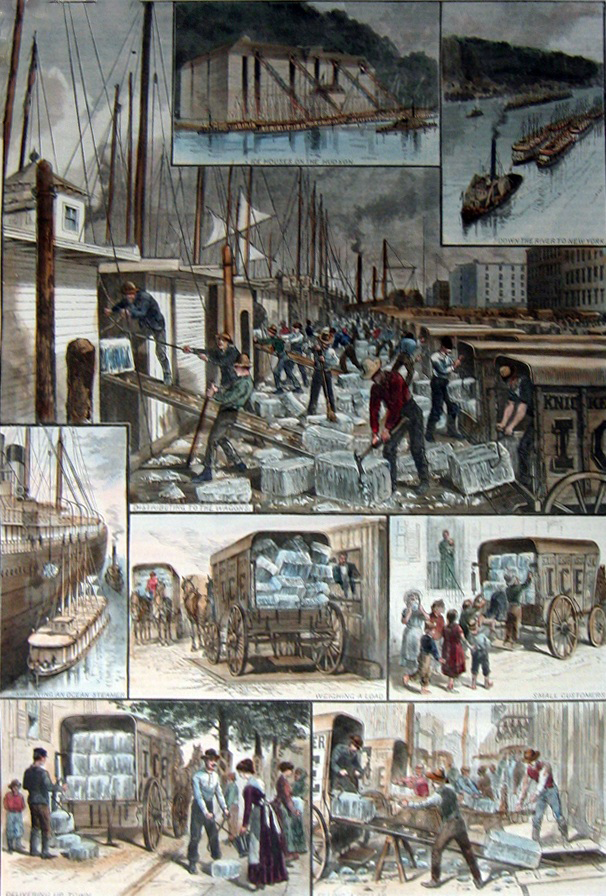
ON THIS DAY: 13 February 1806 – Frederic Tudor’s Ship, Favorite, Departs Boston Harbour for Saint Pierre, Martinique — to sell ice!
Frederic Tudor was only 23 years old, the son of a Boston State Senator. He had come up with the bold idea of transporting ice 1,550 miles to the tropical island of Martinique, where the average temperature was 27°C (80°F) and ice — in the days before refrigeration — non-existent. Massachusetts had over 3,000 lakes and ponds that froze in the winter, and Tudor grew up with an ice house attached to his family home. After a trip to Cuba in 1801, he saw an opportunity to introduce ice to the locals, allowing them to enjoy chilled drinks and make ice cream.
Tudor’s venture was not without setbacks. The Boston Gazette ridiculed him on February 10, writing: ‘No Joke. A vessel with a cargo of 80 tons of ice has cleared out from this port for Martinique. We hope this will not prove to be a slippery speculation.’ Some crew members even feared that the melting ice would sink the ship.
Tudor’s first shipment of ice was given away for free to bar and restaurant owners in Martinique, but no instructions were provided on how to preserve the ice and so most of it melted. Tudor even used some of the ice to make ice cream, earning $300 earned in a single night.
Thomas Jefferson’s Embargo Act of 1807 halted Tudor’s second cargo of ice heading to Havana and it wasn’t until 1810 that Tudor was able to establish his ice business in Cuba. He built an ice house in Havana and obtained exclusive trading privileges in Cuba for six years. Unfortunately, the War of 1812 caused another delay for his business, which put him in debt. He spent a brief spell in debtors prison in Boston.
Tudor never gave up his dream of selling ice to hot countries. After the war, he returned to Havana with more ice and claimed he made a $3,000 profit in the first 3 months, which he proceeded to double over the following three months. He was then in a position to expand his business into the Southern United States, to Charleston, South Carolina and New Orleans, gaining the title ‘The Ice King of Boston’.
Tudor’s next major venture came in 1833 when he sent ice to India—a staggering 7,700-mile journey. Locals referred to it as ‘crystal blocks of Yankee coldness.’ Tudor harvested his ice from Walden Pond in Massachusetts (later made famous by in Henry David Thoreau’s 1854 book) and expanded his Tudor Ice Company, establishing ice houses in Jamaica, Alabama, Calcutta, Madras, Bombay, Sri Lanka, Singapore, China and Australia.
Tudor was well rewarded for his efforts. By the time he passed away in Boston in 1864, at the age of 80, he had amassed significant wealth, with an estimated fortune equivalent to $200 million in today’s money. If money doesn’t grow on trees, for Tudor, at least, it froze in blocks.
